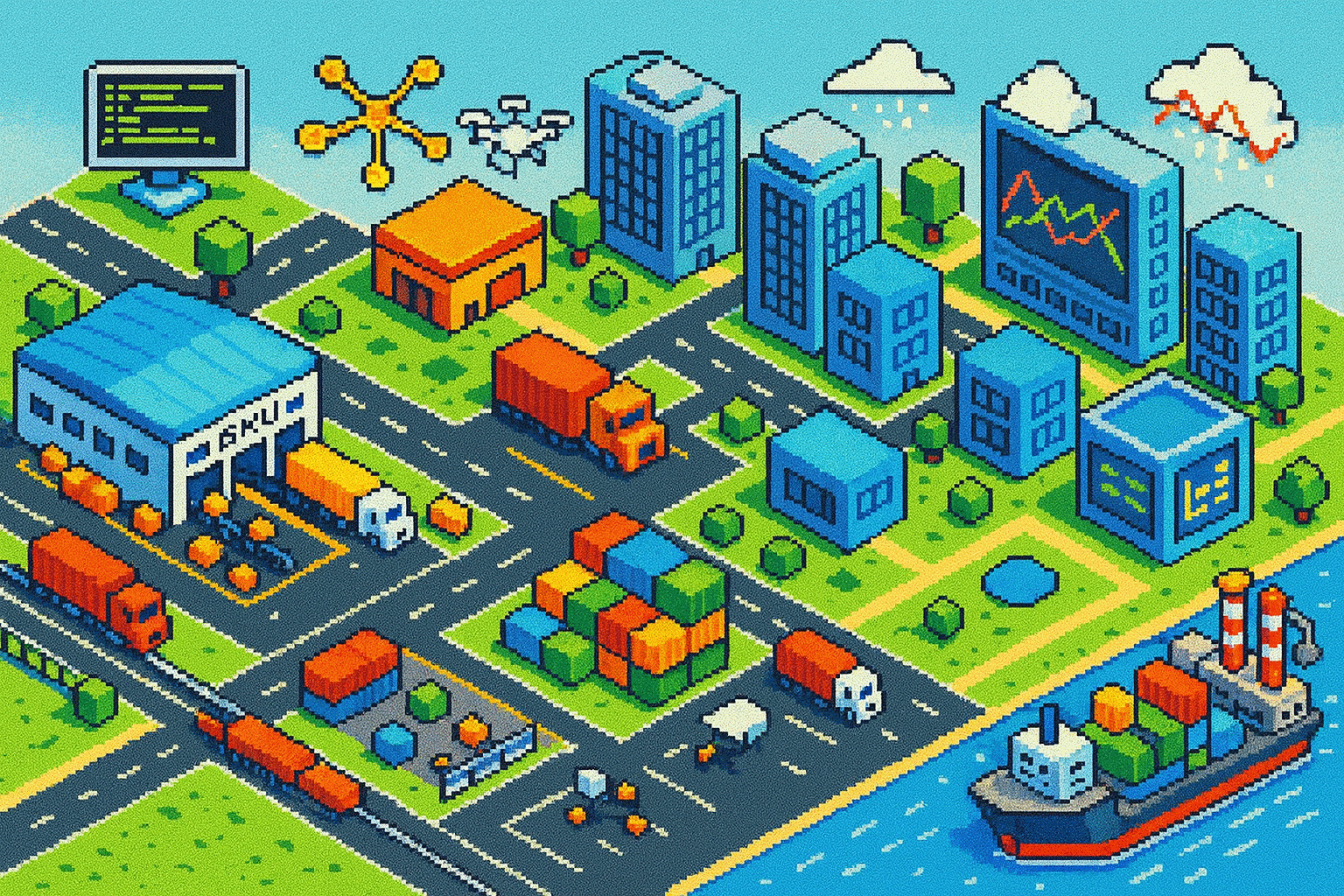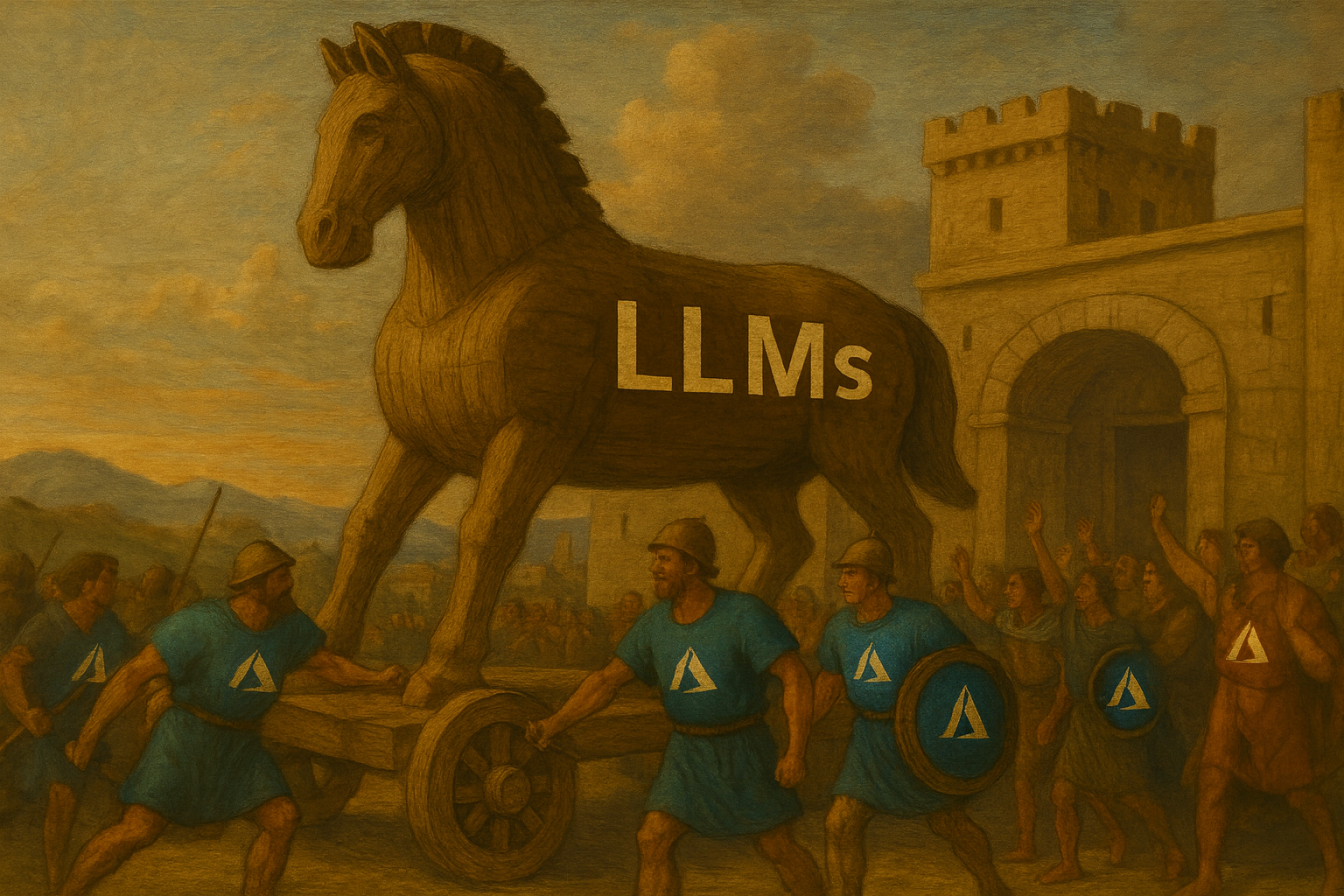サプライチェーンの定義
My book サプライチェーン入門 defines supply chain as:
物理商品のフロー管理における変動性の中での選択肢の熟達。
I chose this phrasing—not for lack of awareness of earlier definitions—because it better reflects the mindset a supply chain practitioner should adopt when thinking about his discipline and his own practice.
Below is a compiled list of definitions for the terms “supply chain” and “supply chain management (SCM)”, as proposed by various authors, academic, and industry sources.

ロジスティクスに注目した定義
These definitions emphasize the flow of materials, products, and related information, often highlighting efficiency, cost, and the “right product, right time, right place” principles of logistics:
-
La Londe & Masters (1994): “サプライチェーンとは、資材を前方へ供給する企業の集合体である。通常、製品を製造し、最終消費者の手に届けるためには、複数の独立した企業が関与する。これには、原材料および部品の生産者、製品組立業者、卸売業者、小売業者、運送会社などが含まれる。”
-
Business Dictionary (n.d.): “サプライチェーンマネジメント:サプライチェーン内の資材と情報の流れを管理し、最低限のコストで最高の顧客満足を提供するための管理。サプライチェーンマネジメントは、サプライチェーンのパートナーが緊密に協力し、注文の生成、受注、履行を調整するためのコミットメントを必要とする。その結果、生産者の所在地をはるかに超える拡張企業体が創出される。”
-
Techopedia (2010s): “サプライチェーンマネジメント(SCM)とは、製品の起源から消費に至るまでの管理および監督である。SCMは、資材、財務、情報の流れを含む。これには、製品設計、計画、実行、監視、および制御が含まれる。この過程の目的は、在庫の削減、取引速度の向上、および利益を考慮した業務フローの改善である。”
-
Management Study Guide (n.d.): “SCMとは、原材料の調達、製造、完成品の流通管理に関わるすべてのビジネスプロセスおよび活動のネットワークの管理である。SCMは、顧客に対して適切な製品を、適切な時、適切な場所、適切なコストで提供するマネジメントの芸術とも呼ばれる。”
ネットワークベースの定義
These definitions characterize the supply chain as a network of organizations (suppliers, manufacturers, distributors, etc.) linked through upstream and downstream relationships in creating and delivering products or services:
-
Christopher (1992): “サプライチェーンとは、最終消費者に届けられる製品やサービスという形で価値を生み出すさまざまなプロセスや活動に、上下流の連結を通じて関与する組織のネットワークである。”
-
Harland (1996): “サプライチェーンマネジメントとは、エンドカスタマーが求める製品およびサービスパッケージの最終提供に関わる、相互に連結された企業ネットワークの管理である。それは、原材料、中間在庫、完成品の起点から消費地点までのすべての移動と保管に及ぶ。”
-
Lambert, Stock & Ellram (1998): サプライチェーンとは “製品またはサービスを市場に届けるために企業が連携すること” である。
-
Blackstone APICS (2013): “サプライチェーンとは、原材料から最終顧客へ製品とサービスを届けるために、情報、物理的商品、現金の流れが設計されたグローバルなネットワークである。”
-
Mentzer et al. (2001): further formalize that a supply chain consists of “a set of three or more entities (organizations or individuals) directly involved in the upstream and downstream flows of products, services, finances, and/or information from a source to a customer”, reinforcing the concept of multi-entity networks.
価値創造を重視した定義
These definitions highlight objectives of value creation, competitive advantage, and customer satisfaction as central to supply chain management:
-
Christopher (1998): “サプライチェーンマネジメントとは、サプライヤーおよび顧客との上下流の関係を管理し、サプライチェーン全体のコストを抑えながら卓越した顧客価値を提供することである。”
-
APICS Dictionary (ca. 2013): “SCMとは、純粋な価値の創出、競争力のあるインフラの構築、世界規模の物流の活用、供給と需要の同期、そしてグローバルなパフォーマンスの測定を目的として、サプライチェーン活動の設計、計画、実行、制御、および監視を行うことである。”
-
SCMA (Supply Chain Management Association, ca. 2014): “SCMとは、企業の戦略的目標を支援し、企業の戦略的競争力の達成に寄与し、企業の競争優位性の向上に貢献し、そして顧客満足を高めることを通じて、より大きな経済的価値を実現するために、製品、サービス、財務、知識の流れおよび企業内外の関係を戦略的に管理するプロセスである。”
-
Investopedia (2025): “サプライチェーンマネジメントとは、製品およびサービスの流れの管理であり、原材料を最終製品に変換するすべてのプロセスを含む。これは、顧客価値を最大化し、市場において競争優位を獲得するために、企業の供給側の活動を能動的に合理化することを含む。”
プロセス指向の定義
These definitions view SCM as an integrative process across business functions and companies—coordinating processes from end supplier to end customer:
-
Global Supply Chain Forum (Lambert et al., 1998): “サプライチェーンマネジメントとは、エンドユーザーから原始的なサプライヤーに至るまでの主要なビジネスプロセスの統合であり、顧客やその他のステークホルダーに価値を提供する製品、サービス、情報をもたらすものである。”
-
Mentzer et al. (2001): “本論文の目的のため、サプライチェーンマネジメントは、特定企業内およびサプライチェーン内の企業間で、従来のビジネス機能とそれらの機能横断的な戦術を体系的かつ戦略的に調整することで、個々の企業およびサプライチェーン全体の長期的パフォーマンスを向上させるものである。”
-
CSCMP (Council of SCM Professionals, 2013): “サプライチェーンマネジメントとは、調達および購買、変換、そしてすべての物流管理活動に関わるすべての活動の計画および管理を包含する。重要なことに、これはチャネルパートナーとの調整と協力も含む […] 本質的には、サプライチェーンマネジメントは、企業内および企業間での供給と需要の管理を統合するものである。”
-
IBM (2023): “サプライチェーンマネジメントとは、調達、購買、変換、物流に関わるすべての活動を調整および管理することを伴うものである。これには、製品開発や戦略的意思決定から、情報システムや新技術に至るまでのすべてが含まれる。”
なぜこれが重要なのか
Each of the definitions cited offers a different lens on supply chain or supply chain management—from a focus on logistics and cost efficiency, to viewing the supply chain as a network of organizations, to stressing value creation and strategic advantage, and finally to emphasizing the integration of processes across the extended enterprise.
In my view, all those definitions miss the central point: supply chain is an applied branch of economics. At its core, it concerns the allocation of scarce resources among alternative uses. Overlooking this is to miss the forest for the trees. Hence, a new definition was in order.


